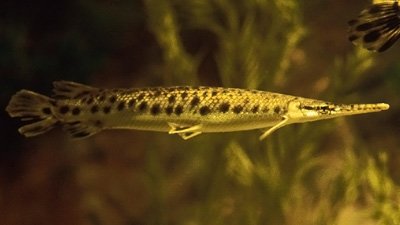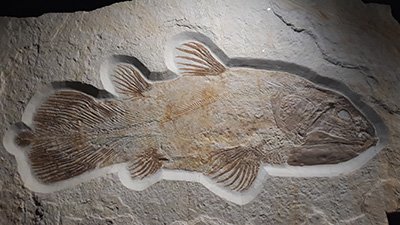Tropical Huntsman
Tropical Huntsman spider trapped in Baltic amber for millions of years?
News Source
Arachnologists and paleontologists have found a way to peer through opacified amber to see if an ancient Huntsman spider is really what 19th century naturalist Georg Karl Berendt said it was. “These old, historical amber pieces have reacted with oxygen over time and are now often dark or cracked, making it hard to see the animal specimens inside,” says Dr. David Penney.
Because the modern Huntsman spider is a very active spider native to the tropics and southern Europe, experts wondered if Berendt had erred identifying this member of his spider collection. Using a CT scanner, a finely detailed 3-D image of the spider was produced. “We were able to show that the fossil is unquestionably a Huntsman spider and belongs to a genus called Eusparassus, which lives in the tropics and also Europe 50 million years ago,” reports Dr. Penney.
The spider is preserved in Baltic amber, which like all amber is hardened polymerized tree resin. The actual chemical composition of amber depends upon the kind of tree which produced it. Baltic amber contains large quantities of the chemical succinite, and its tree of origin is still debated. As its name suggests, Baltic amber is found throughout northern Europe, and of all amber it tends to have the richest fossil content. Baltic amber is commonly dated at 35–50 million years old based on surrounding rocks. Thus, the Huntsman spider being examined is believed by the researchers to be 50 million years old.
He appears as modern as his descendants. This fact does not surprise us, since we are confident that the amber is no more than a few thousand years old.
Evidently, Huntsman spiders have made no evolutionary progress or even any speciation changes since this one managed to get himself entombed. He appears as modern as his descendants. This fact does not surprise us, since we are confident that the amber is no more than a few thousand years old.
Actually, the finding of amber-trapped modern-appearing insects from far away regions is quite consistent with the scrambling of amber fossils expected in the wake of the worldwide Flood or the subsequent Ice Age. The structural details of more amber-trapped creatures should soon become available as this non-destructive technique is used to see what’s hidden inside more pieces of the preserving polymer. As Dr. Penney says, now “other scientifically important specimens in historical pieces of darkened amber can be investigated and compared to their living relatives in the same way.”
For More Information: Get Answers
Remember, if you see a news story that might merit some attention, let us know about it! (Note: if the story originates from the Associated Press, FOX News, MSNBC, the New York Times, or another major national media outlet, we will most likely have already heard about it.) And thanks to all of our readers who have submitted great news tips to us. If you didn’t catch all the latest News to Know, why not take a look to see what you’ve missed?
(Please note that links will take you directly to the source. Answers in Genesis is not responsible for content on the websites to which we refer. For more information, please see our Privacy Policy.)
Recommended Resources

Answers in Genesis is an apologetics ministry, dedicated to helping Christians defend their faith and proclaim the good news of Jesus Christ.
- Customer Service 800.778.3390
- Available Monday–Friday | 9 AM–5 PM ET
- © 2026 Answers in Genesis







